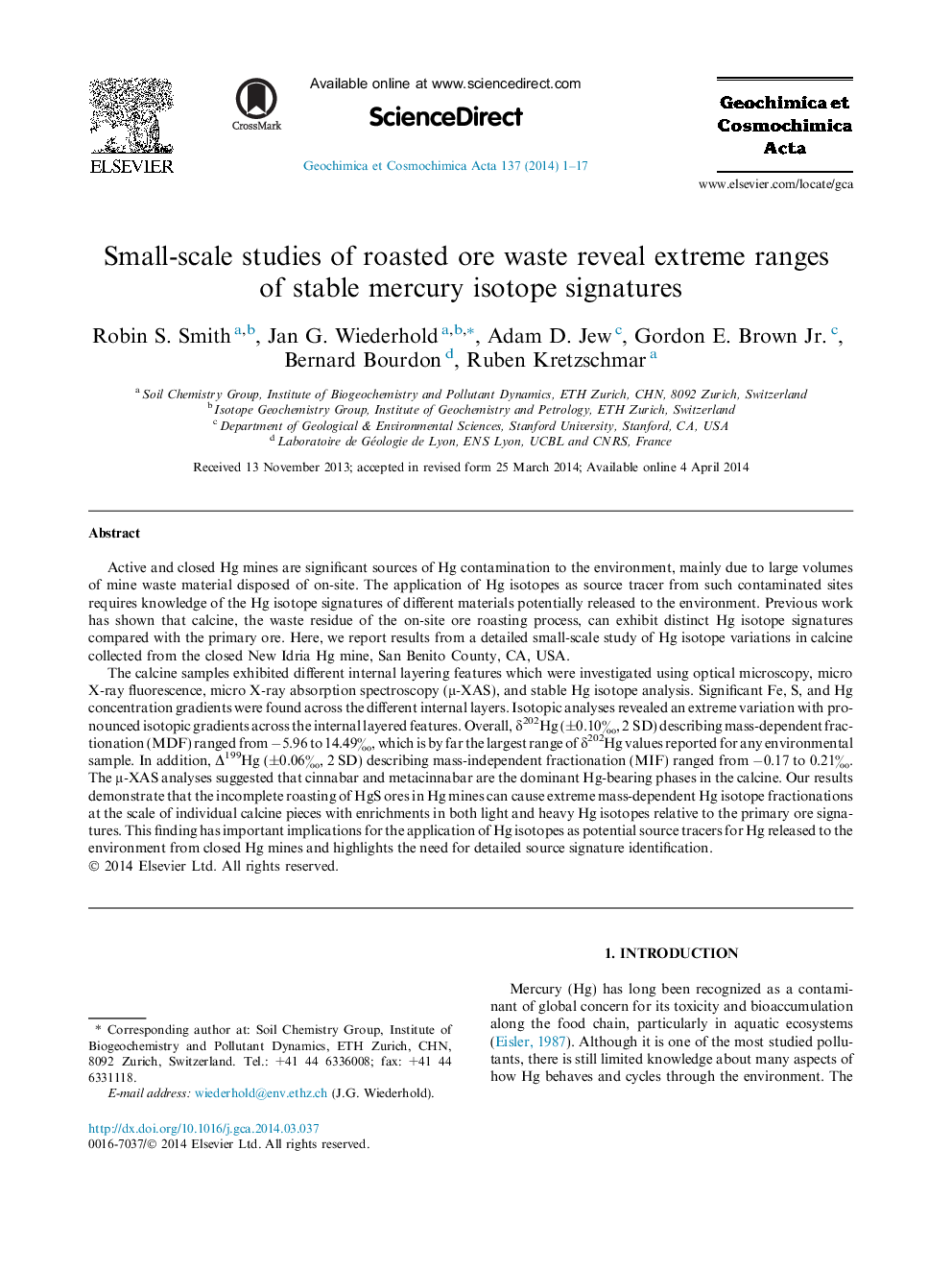| Article ID | Journal | Published Year | Pages | File Type |
|---|---|---|---|---|
| 6438573 | Geochimica et Cosmochimica Acta | 2014 | 17 Pages |
Abstract
The calcine samples exhibited different internal layering features which were investigated using optical microscopy, micro X-ray fluorescence, micro X-ray absorption spectroscopy (μ-XAS), and stable Hg isotope analysis. Significant Fe, S, and Hg concentration gradients were found across the different internal layers. Isotopic analyses revealed an extreme variation with pronounced isotopic gradients across the internal layered features. Overall, δ202Hg (±0.10â°, 2 SD) describing mass-dependent fractionation (MDF) ranged from â5.96 to 14.49â°, which is by far the largest range of δ202Hg values reported for any environmental sample. In addition, Î199Hg (±0.06â°, 2 SD) describing mass-independent fractionation (MIF) ranged from â0.17 to 0.21â°. The μ-XAS analyses suggested that cinnabar and metacinnabar are the dominant Hg-bearing phases in the calcine. Our results demonstrate that the incomplete roasting of HgS ores in Hg mines can cause extreme mass-dependent Hg isotope fractionations at the scale of individual calcine pieces with enrichments in both light and heavy Hg isotopes relative to the primary ore signatures. This finding has important implications for the application of Hg isotopes as potential source tracers for Hg released to the environment from closed Hg mines and highlights the need for detailed source signature identification.
Related Topics
Physical Sciences and Engineering
Earth and Planetary Sciences
Geochemistry and Petrology
Authors
Robin S. Smith, Jan G. Wiederhold, Adam D. Jew, Gordon E. Jr., Bernard Bourdon, Ruben Kretzschmar,
